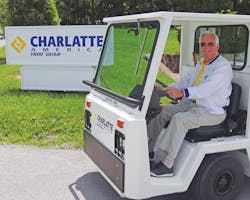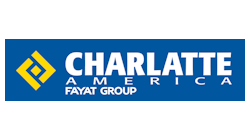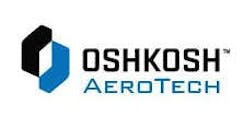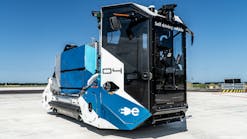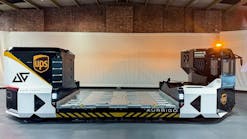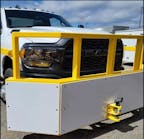The first thing you need to know about Bill Biermann is that he never stops. Or at least he doesn’t want to.
We talked with him on a morning when he was stuck at home nursing an injury.
“It’s keeping me off the golf course,” he says, “and I don’t like that at all.”
We spent the next hour talking about his long career as Bill checked off working for a number of airlines that built the industry. Although pioneers like Pan Am and Eastern may be gone, their memories remain. But ever heard of Colonial Airlines or Mackey Air?
“We did everything in those days,” Bill says of the time he was more in charge of airline operations at destination travel spots in Bermuda, The Bahamas and central Florida. “And while it was typical to operate on a contract basis for ground support, I was still interested and involved in ground support, too. I certainly had to oversee it once I became a manager.”
By the end of our call, we realized Bill lived just a short drive away from the company he spent 17 years with before retiring last December. Later that same day, Bill must have driven to Charlatte of America since we received the image on this month’s cover by the following day.
With that attitude, it’s no surprise that this year’s Lifetime Achievement Award winner has managed to “retire” not once, but twice and earned the chance to retire a third time.
E-GSE PIONEER
Bill started his career in 1951 as a field agent with Pan American World Airways in his native Bermuda, and eventually joined Eastern in 1956 where he would stay for the next 33 years.
Since he spent much of his early days more in general airline operations, let’s jump ahead to 1979 when Bill is promoted to corporate GSE manager at Eastern’s home office at Miami International Airport. (For more on the start of Bill’s career, see sidebar “Before GSE.”)
Business couldn’t be better for Eastern at the time. The airline, buffeted as all were by deregulation, was coming off four of its most profitable years under the command of former astronaut Frank Borman.
In his new role, Bill immediately got involved in promoting electric GSE.
“This equipment was coming on the scene,” Bill remembers, “and we all knew that we would need some protocol on operating and charging electric GSE.”
With that in mind, Bill joined SAE International and started a committee that developed the trade group’s first standards and recommended practices for e-GSE. Working with battery makers, Bill also helped develop opportunity charging and other electric utilization on the ramp.
The SAE meetings met several times each year, with much of work reviewed in-depth every five years for major revisions.
During these SAE meetings, Bill also met an executive named Ed Shaffrey who worked for Kersey Manufacturing, an electric mining manufacturing based in Virginia. As it turned out, that friendship would serve both men well in the many years to follow.
BIG ORDER
By 1980, Eastern operated a major hub at what was then called Hartsfield Atlanta International Airport. As its name implies, Eastern’s original success came from its decision to travel up and down the country’s East Coast rather than fly from coast-to-coast.
That made Atlanta a natural choice for the airline’s growth. To give an idea of just how large Eastern’s Atlanta hub was, consider these figures we dug up from 1990 – the airline’s last full year of business as it limped along through management mishaps and union strife:
- The airline operated around 288 daily departures from Atlanta.
- For the year, Eastern carried almost three-quarters of its 16.5 million passenger base from Atlanta.
- From Atlanta, Eastern served 68 destinations.
For Bill, a major hub meant a lot of GSE. And for Bill’s boss, that meant a lot of expensive gasoline and diesel.
“The edict came from the top” Bill remembers. “Frank Borman ordered us to find alternative fuels. He was ahead of his time as far as ground support equipment goes. It’s not what most airline chiefs are concerned about. But by this point, gas was around $2 a gallon.”
As a result, Bill looked at electric and liquid propane to power its GSE fleet.
“The propane LP looked almost better than batteries,” Bill says, “but no airport authority would want LP storage tanks anywhere near its property.”
So electric it was. Bill started buying the first of 600 electric bag tractors made by Lansing-Bagnall, a UK-based material handling manufacturer. Although the tractors were distributed throughout Eastern’s network, the majority went to Atlanta.
“We were leaders in the world at that time with the electric equipment,” Bill adds. “The only other airline at that point to operate so much electric GSE was British Airways at Heathrow.”
While the scuttlebutt remains to this day that electric equipment costs more than the price tag of new gas or diesel GSE, today’s would-be e-GSE buyers can sleep easy compared to a pioneer like Bill. The electric equipment he was purchasing was two times the price of comparable fossil fuel models.
“We always were asked by the finance department, ‘Can’t you do this another way to save money?’ But we could always prove the value in going with electric GSE,” Bill explains.
While there certainly was a savings in fuel costs, Bill says the maintenance costs was where the higher upfront costs more than justified the decision to go electric.
“Time and time again, we could show that our cost to maintain electric GSE was two-thirds the cost of maintain the same type of equipment that ran on diesel or gas,” Bill adds.
With the bag tractors in place, Bill next turned his attention to electric pushbacks. And here’s where his SAE friend, Ed Shaffrey, had an idea.
Ed figured a modified version of his electric mining equipment might do the trick. Built low to the ground, Bill figured the same way.
“It was perfect in every way,” Bill explains, “but the main problem was the articulated front end.
For a pushback, the equipment needs to provide a straight push.
“And at the time, every pushback operation required a tow bar,” he adds. “There was no such thing as towbarless – not even close.”
The two met a few times and even jotted down some design improvements on a napkin over dinner. About six months later, Ed showed Bill a prototype. There were still a couple of tweaks needed. The accelerator was too close to the brake and the steering radius wasn’t quite right.
Finally, Ed’s company shipped a model to Atlanta that Bill put to a 30-day test. The model was stationed at a gate at the end of a terminal that had about 2-3 percent slope going away from the gate and that required a skillful turn.
Bill put the pushback through its paces, but finally the big day came when he would demo it for the airline’s top brass.
“I was as nervous as I could be considering all the big bosses were there,” Bill adds not sure if Frank Borman, himself, was present.
But all Bill and Ed’s work to develop the new electric pushback paid off, and that day’s pushback performed just as well as all the others.
“When the operation was completed, even the pilot got on his intercom and told the operator that that was the smoothest pushback he’d ever had,” Bill says.
Kersey ended up selling Eastern around 40 of its modified electric pushbacks, primarily for its Atlanta hub. As with most GSE, the Kersey pushbacks went on to provide decades of service.
“A few of the vehicles ended up being bought by Alaska Airlines after Eastern went bankrupt,” Bill says. “I know for a fact that some were still in service until just a few years ago. And if you could get parts, they might still be pushing back planes."
GSE REBUILD
Bill made one more GSE venture while at Eastern. In 1985, he was made operations manager for PRO Inc. Located in Gainesville, GA, the airline’s GSE shop may be the furthest away from the ocean any of Bill’s jobs have taken him.
There Bill was given an 85,000 sq. ft. build-out to outfit a shop to rebuild GSE.
“We built it just like we wanted,” he adds. “We had 20-foot service bays with everything a mechanic would need right there without running all over the place to look for something.”
During his time at PRO, Bill figures he worked will all types companies and models, such as Cochran & Western, TUG, Clark, John Bean Technologies, Aeroplane, Stewart & Stevenson and NMC-Wollard, to name a few.
“They were new in every sense of the word when we got through with them,” Bill says.
Not content with just rebuilding GSE, Bill ended up becoming a GSE manufacturer as well.
“Of course, none of us had done anything like that before,” Bill explains, “but as it turned out building a new catering truck was less expensive than rebuilding a used model.”
Bill’s first catering trucks went to the Chelsea Co., at the time part of Continental’s operations at Newark Liberty Airport. (The in-flight caterer is still in business and currently part of United Continental.)
But by the time Bill arrived at PRO, his employer of more than 30 years was coming to its last days. By 1985, Eastern was the largest IATA airline in terms of passengers enplaned and operated in 26 countries on three continents. However, the airline was also bleeding cash.
Unable to cope with the onslaught of the industry’s first no-frills airlines and pinned down by crippling union strikes, Borman sold Eastern to Frank Lorenzo in 1986 and a fixture in aviation since 1928, became a subsidiary of the Texas Air Corp.
Lorenzo ended up driving the airline into bankruptcy in 1989. By then, labor unions and management had become so embroiled over their versions of Eastern’s future that they systematically tore apart one of the nation’s oldest and once most-prestigious airlines. The airline shut down at midnight on Jan. 18, 1991.
RETIREMENT NO. 1
Bill’s shop didn’t last quite that long. Continental was supposed to support the job, too, but the airline never sent as much equipment to Georgian as Eastern had. So Bill “retired” for the first time, but spent the next several years successfully working in South Florida real estate.
By 1995, however, Bill had lost his wife to cancer and he received a call from his old SAE friend again. Kersey had gone out of business, but Ed Shaffrey had joined Charlatte of America when it opened in 1993 as president and brought along other former Kersey employees that had helped engineer Bill’s first electric pushback.
“Ed called and said, ‘If you want a job, you’ve got one,’ ” Bill adds. Bill joined Charlatte in 1995 as the sales/marketing manager and continued on for 17 more years to do his part in building the company into an industry leader in electric GSE.
Bill retired from Charlatte last December, but quickly joined yet another industry friend. This time around, Bill joined Tim Wix, Wix Support Equipment. Tim spent about 30 years working at Delta Air Lines, ultimately serving as general manager of GSE and was responsible for more than $900 million worth of GSE worldwide. (For his efforts, Wix won one of our ground support leadership awards in 2006.)
After retiring from Delta, Wix worked another four years as vice president of sales for Averest Inc., before starting his own business a little over a year ago to distribute products, such as Crown Battery; Ecotality, Access Control Group and Trowin.
Wix sent us an email that summed it up simply: “I offered him a position so that he could continue to be involved in the industry.”
Sounds like a good reason to us.
“I’m getting tired of retiring,” Bill adds, “but I guess I’ll do it a third time.
